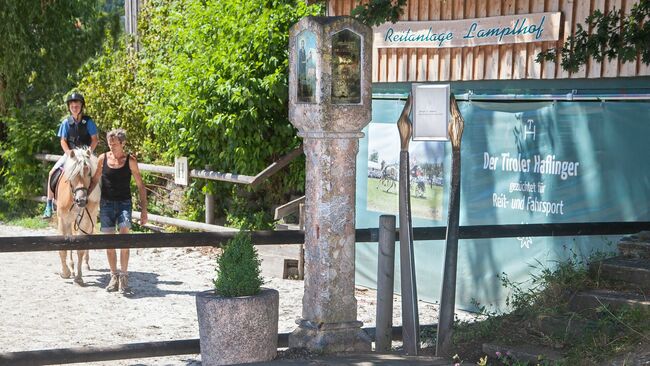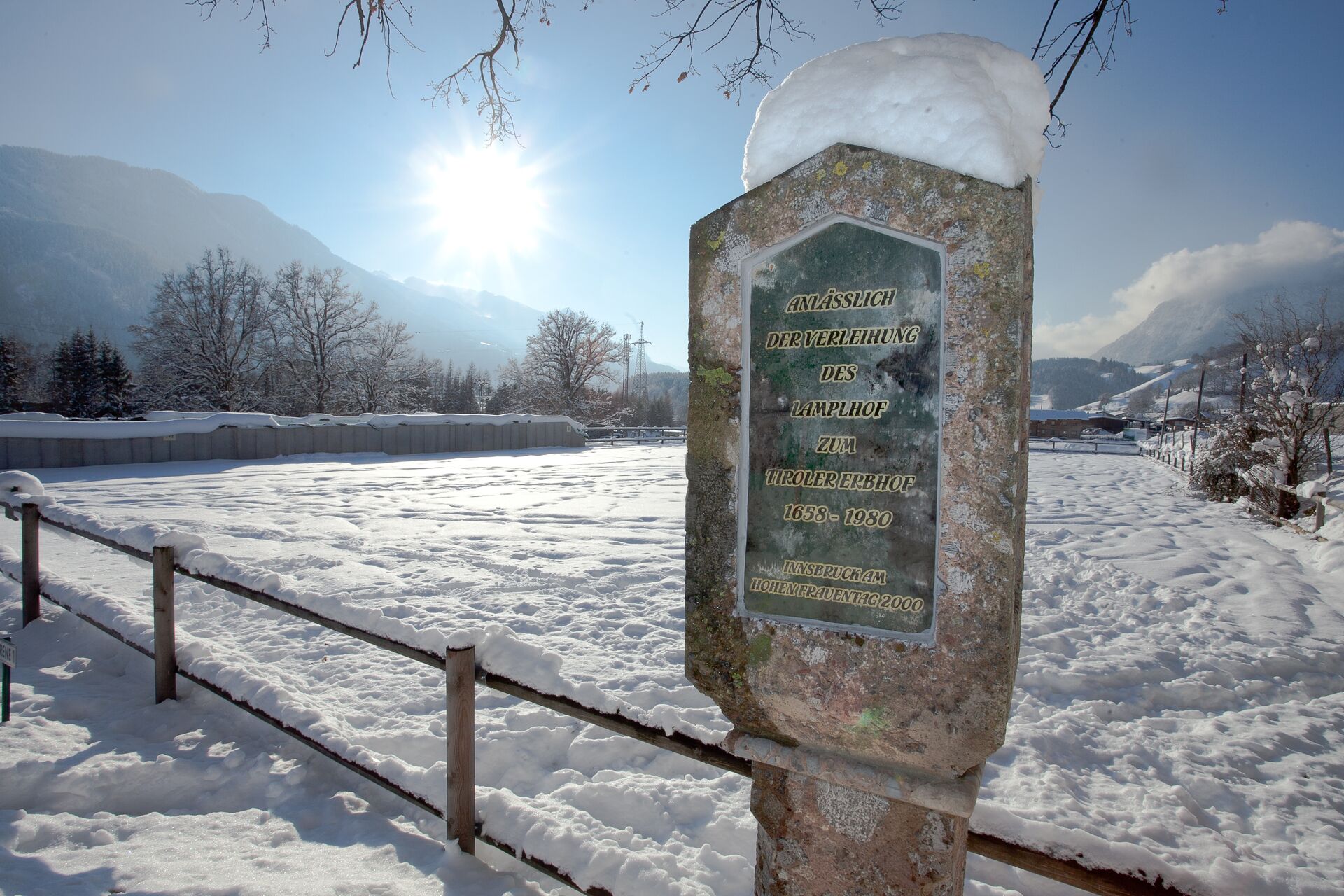St. Leonhard's wayside shrine
To be granted the title of "Erbhof" by the Province of Tirol, a property must have been family owned and occupied for agricultural purposes for more than 200 years. On 14 September 1658, Lamprecht Obholzer, the ancestor of the Lamplhof, bought the fief of Unterhuben. The former lords of the manor were the sovereigns of Tirol. The right of feudal lordship meant that they had to pay part of their income to the sovereigns, Archdukes Ferdinand Karl and Sigismund Franz, later to their liege lords, Emperors Leopold and Josef I, and then to the supreme liege lord, Empress Maria Theresia. On 11 April 1790, Emperor Charles VI revoked the feudal rights of the Unterhuben estate - later renamed Lamplhof – to ensure that the estates could be managed in a sustainable manner.
The Lamplhof, the first ancestral farm in the municipality of Wiesing, was one of a few farms to be passed on under feudal law. Loyalty to the homeland and the preservation of inherited property are expressions of a deeply rural way of thinking. To commemorate the awarding of the farm's hereditary status, a marble wayside shrine was built in 2000, with oil paintings by the artist and painter Erika Tiefenbrunner from Thaur. The shrine was erected in the riding arena under a centuries-old oak tree and is a beautiful place to linger. On 1 June 2003, it was consecrated to St. Leonhard, the patron saint of animals and farmers, by Father Hermann from Fügen.


